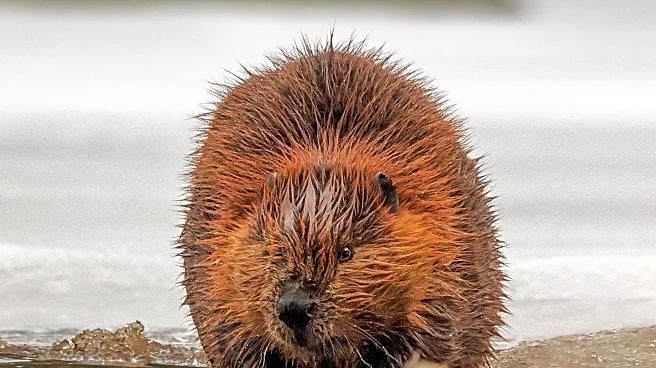What's Happening?
Wildlife photographer Dennis Jackson recently encountered a rare white beaver while on a fishing trip in Ontario, Canada. Initially mistaking the creature for a swan or seagull, Jackson was surprised to discover it was a beaver with white fur. Despite
not having his professional camera equipment, Jackson managed to capture photos and videos of the beaver using his phone. Upon returning with his photography gear, he documented the animal further. The beaver's unusual coloring, identified as leucistic by Canadian naturalist Michael Runtz, does not affect its behavior or interactions with other beavers. Jackson has chosen to keep the location of the marsh private to protect the beaver.
Why It's Important?
The discovery of a leucistic beaver is significant as it highlights the diversity and rarity of wildlife in natural habitats. Such findings can enhance public interest in wildlife conservation and biodiversity. For wildlife photographers and naturalists, documenting rare animals like this beaver can provide valuable insights into genetic variations and their impact on animal behavior and ecology. The event underscores the importance of preserving natural habitats to allow for the continued existence and study of unique wildlife species.
What's Next?
Jackson's decision to keep the marsh's location confidential aims to protect the beaver from potential disturbances by curious onlookers. This approach reflects a broader conservation ethic that prioritizes the well-being of wildlife over public exposure. The documentation of the beaver may inspire further research into leucism and its prevalence among other animal species. Additionally, Jackson's experience may encourage other wildlife enthusiasts to explore and document their local environments, potentially leading to more discoveries.
Beyond the Headlines
The sighting of the white beaver raises questions about genetic diversity and adaptation in wildlife populations. It also highlights the role of citizen scientists and photographers in contributing to wildlife research and conservation efforts. By sharing his experience, Jackson not only brings attention to a rare genetic condition but also fosters a greater appreciation for the natural world and the need to protect it.















